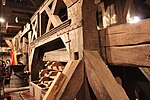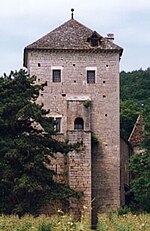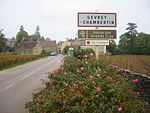Dijon (UK: , US: , French: [diʒɔ̃] ) is a city that serves as the prefecture of the Côte-d'Or department and of the Bourgogne-Franche-Comté region in eastern France. As of 2017 the commune had a population of 156,920.
The earliest archaeological finds within the city limits of Dijon date to the Neolithic period. Dijon later became a Roman settlement named Divio, located on the road between Lyon and Paris. The province was home to the Dukes of Burgundy from the early 11th until the late 15th centuries, and Dijon became a place of tremendous wealth and power, one of the great European centres of art, learning, and science.The city has retained varied architectural styles from many of the main periods of the past millennium, including Capetian, Gothic, and Renaissance. Many still-inhabited town-houses in the city's central district date from the 18th century and earlier. Dijon's architecture is distinguished by, among other things, toits bourguignons (Burgundian polychrome roofs) made of glazed terracotta tiles of various colours arranged in geometric patterns.
Dijon holds an International and Gastronomic Fair every year in the northern-hemisphere autumn. With over 500 exhibitors and 200,000 visitors every year, it is one of the ten most important fairs in France. Dijon also hosts every three years the international flower show Florissimo. Dijon has become famous for Dijon mustard, which originated in 1856, when Jean Naigeon of Dijon substituted verjuice, the acidic "green" juice of not-quite-ripe grapes, for vinegar in the traditional mustard recipe. Dijon is a green city with an important tertiary sector, as well as a regional economic center with a diversified fabric, a traditional food-processing center (Dijon crême de cassis and kir, gingerbread, Lanvin chocolate...) and a renowned pharmaceutical sector.
On 4 July 2015, UNESCO registered the historical centre of the city as a World Heritage site, as one of the components of the "Climats, terroirs of Burgundy" site, because of its historical importance in regulating the system of wine production in Burgundy.









